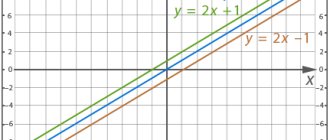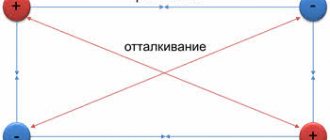Zero
In an ordinary socket there are 2 contacts - phase and zero. Where does zero come from in electricity if plus and minus are phase variables? Each generator at a power plant has 3 windings and each generates a separate phase. The phases are designated by the Latin letters A, B and C. The ends of all 3 windings are closed, and the other ends are the sources of the phases. The point of closure of the windings is zero. Thus, the current from any of the windings passing through the load returns to the zero point. Additionally, in the switchboard of the house, the neutral is grounded, and the circuit is called “solidly grounded neutral”. With overhead power lines, the neutral wire is grounded on supports. This is done so that in the event of a short circuit, the current reaches a maximum sufficient to trigger the cut-off automatics. In addition, if a break occurs on the main neutral wire, the earth will act as a collector and an accident will not occur.
Some industrial electrical installations have an isolated neutral, as this is provided for by the operational features of the installation itself. In houses, the zero must be grounded.






